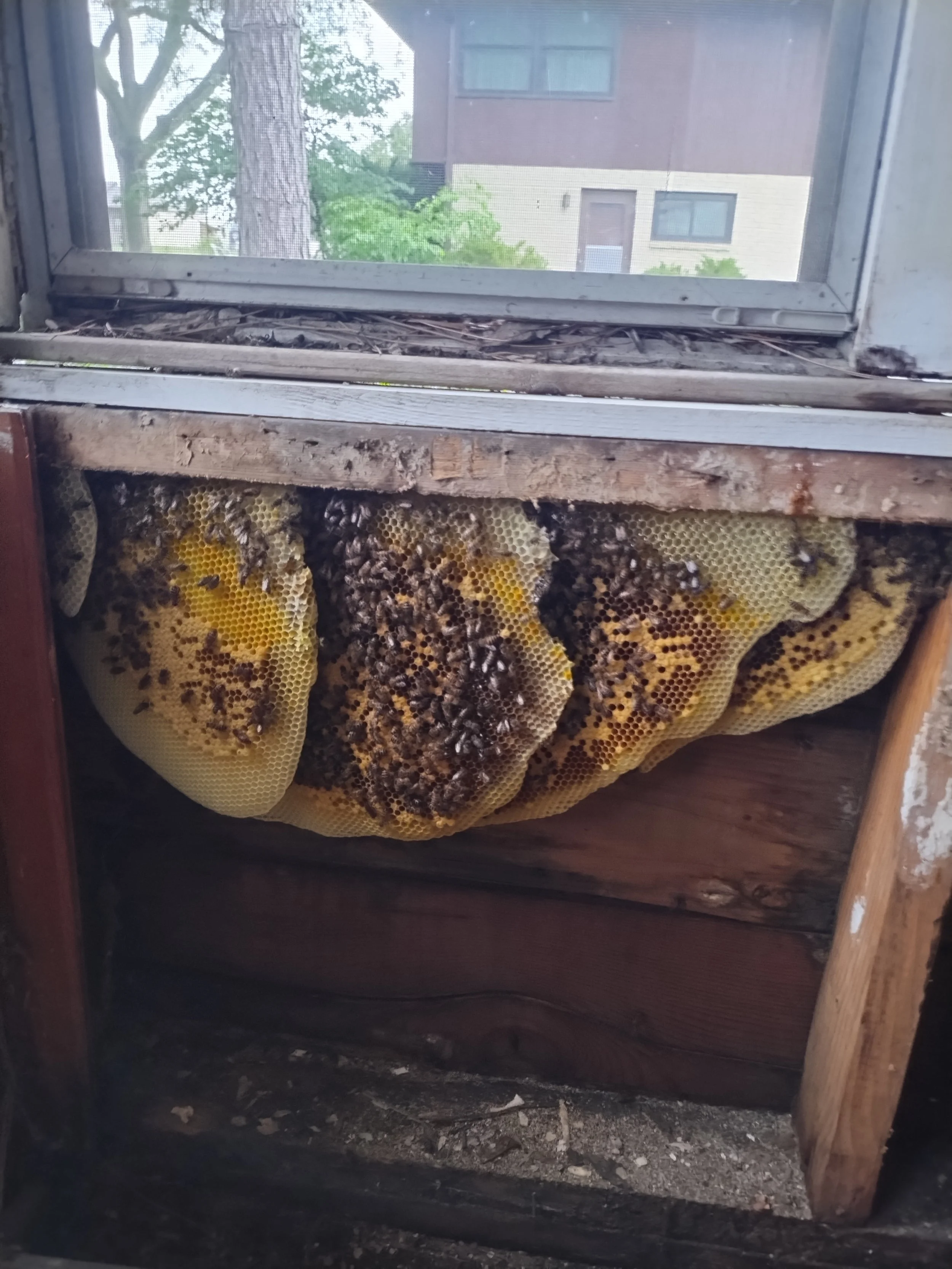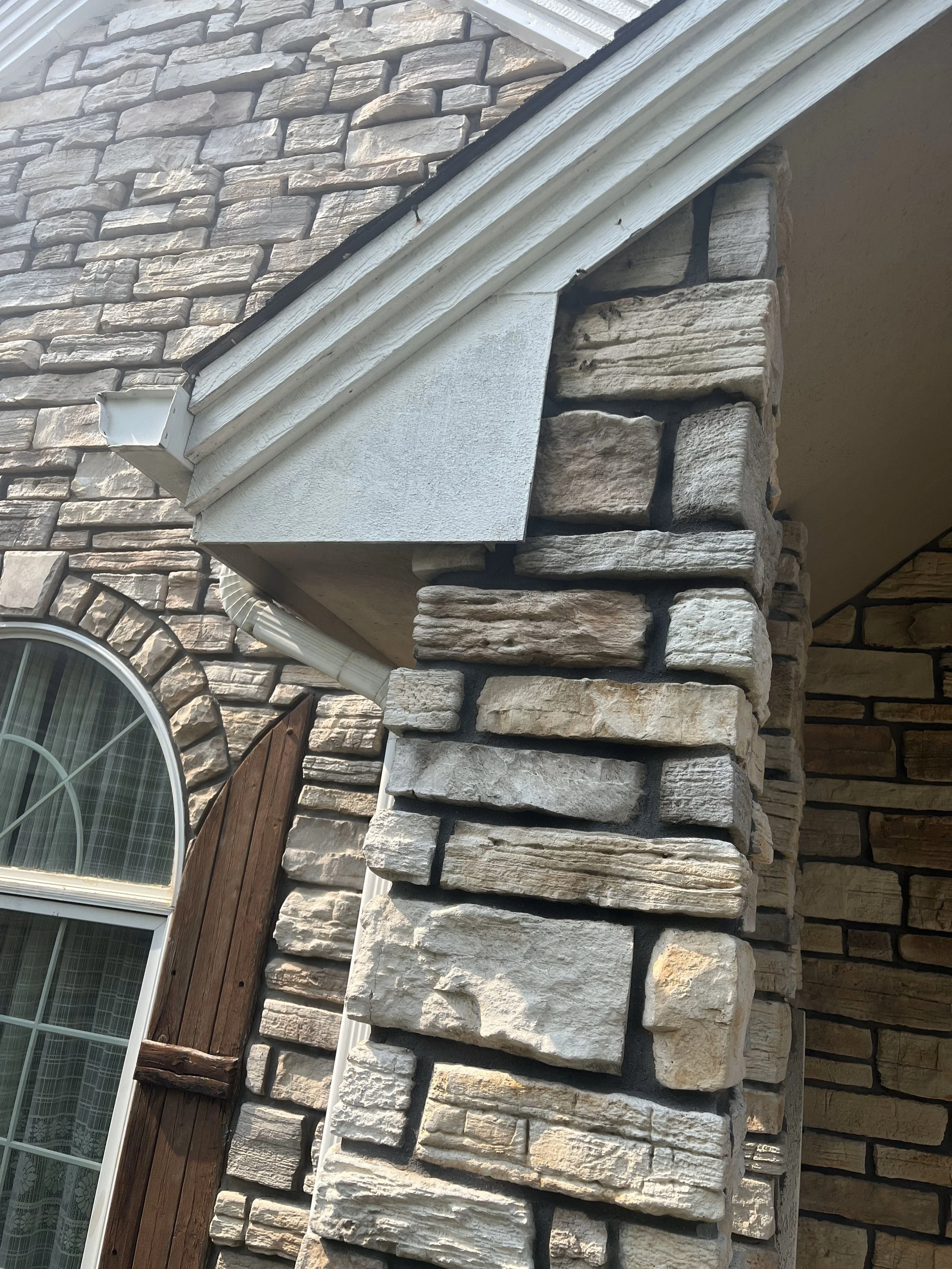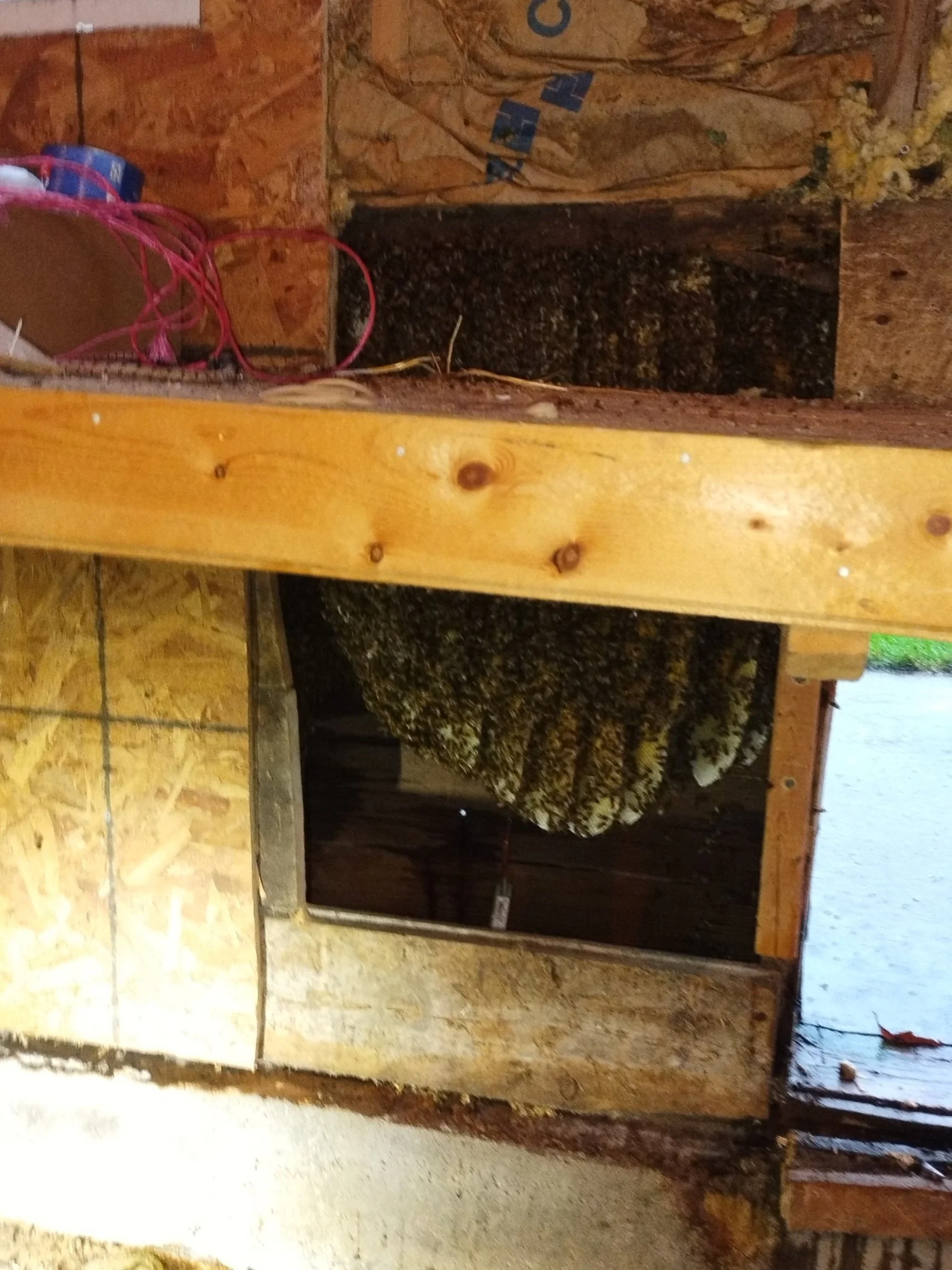
Central Iowa Honey Bee
Removal
Welcome to Central Iowa Honey Bee Removal, the bee removal side of Blood Money Honey. Beekeeper Brian provides bee removal services in the Central Iowa area! Colloquially called a “cut-out,” bee removal involves cutting into an existing structure to remove a honey bee colony. For more info see the FAQs below.
FAQ about Cut-outs
-
I found bees in my structure, what do I do?
Bees in a structure, be it a home, business, barn, shed, outhouse, pumphouse, you name it, can be a real problem. If bees move in to your structure, please contact me. I remove bees all over Central Iowa. Feel free to use the form on my contact page, call or text at (515) 520-2433, or you can reach me by email at: brian@bloodmoneyhoney.com. Be sure to send some pictures of the bees with your text or email.
-
How did bees get into my structure?
Bees move into a structure when a swarm decides your location is a good place to establish a hive. Swarms don’t care if that structure is a tree or a house. If they find a small opening in your structure and a cavity within, then it’s a good home. That’s why it’s always a good idea to contact me if you discover a swarm instead of letting it go, because where it goes could be your house! See my swarm page faq for more information.
-
What areas in Iowa do you service?
I service pretty much all of Central Iowa, including Boone, Hamilton, Hardin, Jasper, Marshall, Polk, and Story Counties. That includes the towns of Ames, Ankeny, Boone, Des Moines, Gilbert, Huxley, Kelley, Luther, Madrid, Nevada, Roland, Slater, Story City, and other central Iowa locales. I am happy to help you, but I also know a lot of area beekeepers, so if I can’t help you I can guide you to another local beekeeper who can.
-
What happens during a cut-out?
Well, it’s called a cut-out for a reason! The only guaranteed way to get bees out of a structure is to physically remove them. That means cutting into your wall or the side of your barn (see pic above) to expose the colony inside. Then I have to remove the comb and bees and place them into a standard beehive box. And then you have to repair your structure so bees don’t return. While there are other methods such as poisoning the bees (which I don’t recommend) or trying a trap-out (rarely successful), they usually don’t work.
-
This sounds expensive, is it?
A cut-out is a paid service that I provide to the community. It takes knowledge, time, and a lot of equipment. For these reasons, it can be expensive. We will talk about costs when I visit your location and assess the situation. In general I charge a $250 minimum for the first 2 hours of work and an hourly rate after that. I also charge for mileage to and from the jobsite. Most cut-outs take between 3-6 hours. Rush service is available for 1.5x normal fees. While costs can add up quickly, I try to always be fair with my clients.
-
What do I do after a cut-out?
Bees typically like certain kinds of structures and once a colony establishes itself in your home or barn, you can be sure other bees will attempt to do the same thing after I remove your colony. So it’s always best practice to seal and possibly fill the cavity where the bees were residing. I recommend you contact a siding person, roofer, mason, or handyperson to find out about your options and have that person/business professionally seal up the cavity so that new bees don’t make a home in your home.
-
Do you do repairs after a cut-out?
No! I’m a beekeeper, not a repair person. While I have a good knowledge of construction and building practices, my job is to remove the bees, not fix your structure. Let’s bee clear, removing bees means cutting into your wall or removing bricks, which will require repair. I urge property owners to obtain an estimate of repair costs prior to the start of bee removal. I am happy to consult with your repair person to facilitate the removal.
-
What if I used pesticides on the bees?
Use of pesticides on bees creates problems. One, it is difficult to properly apply pesticide to bees in a structure and often you kill some of them, but not all, leaving behind sick, angry bees. Two, bees treated with pesticide are not desirable for beekeepers. They are sick and their comb, brood, and honey are not useable. For these reasons, I charge double my normal fees to remove a colony subjected to pesticide. Please don’t poison bees!
-
Do you remove bumblebees or wasps?
I often get calls about bees in a structure and those bees turn out to be wasps or leafcutting bees or bumblebees. Like honey bees, these insects are natural pollinators that are beneficial to the environment and many are native pollinators. I am happy to advise you about removal of these insects. While I can remove these insects and have a fee for doing so, I usually recommend a pest control service.
Removal of bees from a home Windsor Heights in 2025. Unfortunately these bees had been poisoned.
Removal of bees from a home in Waukee in 2025. The infrared shows where the bees were located in the stud space of the wall.
Cut-out of bees in the pillar of a home in Altoona in 2025.
Cut-out of a large honey bee colony in the wall of a barn in Clemons in 2025.











